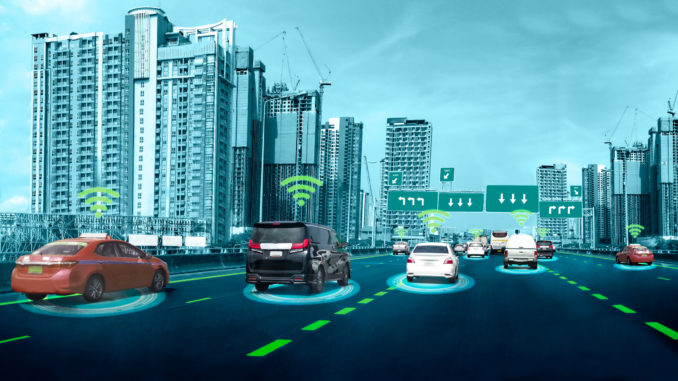
The advent of 5G communications networks is driving a new wave of ideas and opportunities in the IoT community. Broadly speaking, three application categories are emerging. One applies to the market for ‘massive IoT’ which covers use-cases that rely on massive numbers of low-cost devices, each contributing small data payloads. Example use cases can be found in the areas of agriculture, smart utilities, smart cities, and smart buildings. The second, referred to as ‘critical IoT’, involves systems that support real-time control of machinery, robot interactions and intelligent transport systems. The final category, ‘Broadband IoT’, involves relatively higher throughput applications associated with larger data volumes and the need for lower latency. Example applications in this category include wearable devise, industrial sensors, and video surveillance.
The range of application opportunities and functional capabilities presents several challenges for IoT sensors. Many of these are being addressed through standardization in 3GPP, the global standards development organization for mobile telecommunication technologies. Respective standards for each of the three categories above include NB-IoT and LTE-M, New Radio Ultra Reliable Low Latency Communications (NR URLLC) and, New Radio Reduced Capacity (NR RedCap).
Deployment Considerations
Apart from the engineering and technical characteristics of IoT sensors, business decision makers need to consider other aspects when designing and deploying IoT systems. In hardware terms, for example, many low-cost devices will be constrained in terms of their limited processing and data storage capabilities. There are likely to be large populations of such low-cost devices because their affordability will lower the barriers to adoption. Many of these devices will need to remain in the field for long periods of time, with current industry expectations being set at periods of as many as ten years. In addition to the requirement for remote, device management capabilities, long service lives also create a need for energy and communications efficiency. This calls for new, operational techniques based on sleep mode, low data-payload, and energy-harvesting technologies.
Network support for large populations of constrained sensors and devices highlights another deployment consideration for network operators. Ideally, their requirement involves a set of rules of operation between sensors and networks so that network intelligence can offload some of the operational overhead activities. The second aspect treats an IoT device as a system that works with other systems. An illustration of the issue can be seen in the case of a misbehaving IoT sensor or groups of sensors, as might be the case with a line of environmental sensors along a highway. If a sensor has a problem and enters a repeated re-boot loop or transmits too frequently, for example, its behaviour is liable to disrupt other users on shared communications networks. The GSMA has identified the potential for such issues to arise and drafted a set of ’do no harm’ guidelines when designing IoT system designs that use mobile networks.
New Opportunities from Discoverable Sensors
Many sensors will initially be deployed to support individual applications and use-cases. Over time, the density of IoT sensors will increase, notably in shared spaces such as buildings, cities, factories, and transportation hubs. Under this scenario, there will be more opportunities to build innovative applications that share IoT data across individual solution silos. Some applications might benefit from sourcing data from sensors associated with other applications. This can be a source of sustainability benefits where a service provider can avoid duplicating an existing sensor deployment.
To realize these opportunities, however, requires a technical framework that makes it straightforward for IoT applications to discover and access IoT sensors. It also requires sensors themselves to be easily accessible and recognizable. This is where standardization becomes important. It creates an environment where applications can communicate with sensors and also where sensors from many different providers can work together. This is the challenge that oneM2M, the international standards development organization for end-to-end IoT systems set out to address.
In basic terms, the oneM2M standard maps to the middleware layer in a three-layer architecture. It resides between an upper layer, comprising IoT applications, and a lower layer, comprising connected devices and their communications networks. The design intention behind this arrangement is to allow any IoT application to connect to any IoT device, as long as both conform to the oneM2M standard. It means that an application developer can use a suite of software services in the middleware layer to handle routine tasks such as connecting to a remote sensor and consuming data from it. As long as the developer knows how to use the middleware services, there is no need to master the connectivity and data protocol intricacies in the technology stack.
The process of including oneM2M agent software in devices and applications solves the basic connectivity challenge, allowing these entities to communicate with one another. The oneM2M standard goes further by providing standardized services to enable data interoperability. The first step involves syntactic interoperability, which relies on common information models to describe sensors and devices. These capabilities provide the foundations for semantic interoperability, which is the next step in simplifying the exchange of data. In oneM2M, a semantic interoperability services equips developers with the tools to attach meaning to data to make the semantics of IoT sensor understandable and amenable to machine processing.
Longer Term Prospects for IoT Sensors
The communications and cloud computing industries are already looking ten years ahead to the era of 6G communications. While extended reality applications, haptic feedback and multi-sensory sensors capture the imagination for new services and applications, many researchers are studying the issues around even more constrained sensors. These include true wireless sensors that can be embedded in walls, bridges, and other structures at the point of construction. Battery life, alternative energy sources including radio frequency (RF) based energy harvesting and zero-energy air interfaces are important developments to enable such deployments. They could pave the way for many different industries to scale up to 1 trillion mobile and connected IoT things across the world.
Ravi Pragada, oneM2M Representative and Senior Director & Senior Principal Engineer, InterDigital Inc.



